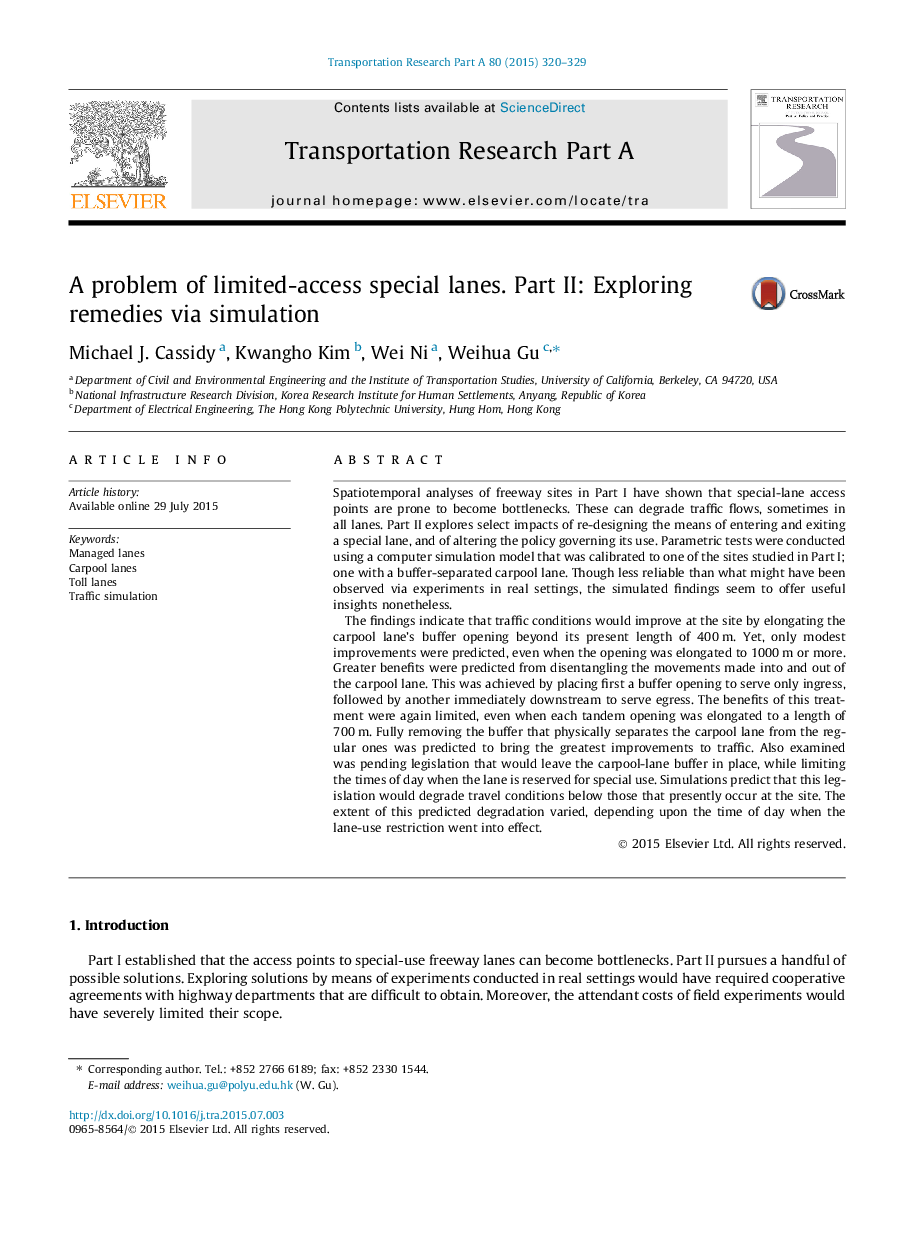| Article ID | Journal | Published Year | Pages | File Type |
|---|---|---|---|---|
| 6781231 | Transportation Research Part A: Policy and Practice | 2015 | 10 Pages |
Abstract
The findings indicate that traffic conditions would improve at the site by elongating the carpool lane's buffer opening beyond its present length of 400Â m. Yet, only modest improvements were predicted, even when the opening was elongated to 1000Â m or more. Greater benefits were predicted from disentangling the movements made into and out of the carpool lane. This was achieved by placing first a buffer opening to serve only ingress, followed by another immediately downstream to serve egress. The benefits of this treatment were again limited, even when each tandem opening was elongated to a length of 700Â m. Fully removing the buffer that physically separates the carpool lane from the regular ones was predicted to bring the greatest improvements to traffic. Also examined was pending legislation that would leave the carpool-lane buffer in place, while limiting the times of day when the lane is reserved for special use. Simulations predict that this legislation would degrade travel conditions below those that presently occur at the site. The extent of this predicted degradation varied, depending upon the time of day when the lane-use restriction went into effect.
Keywords
Related Topics
Physical Sciences and Engineering
Engineering
Civil and Structural Engineering
Authors
Michael J. Cassidy, Kwangho Kim, Wei Ni, Weihua Gu,
